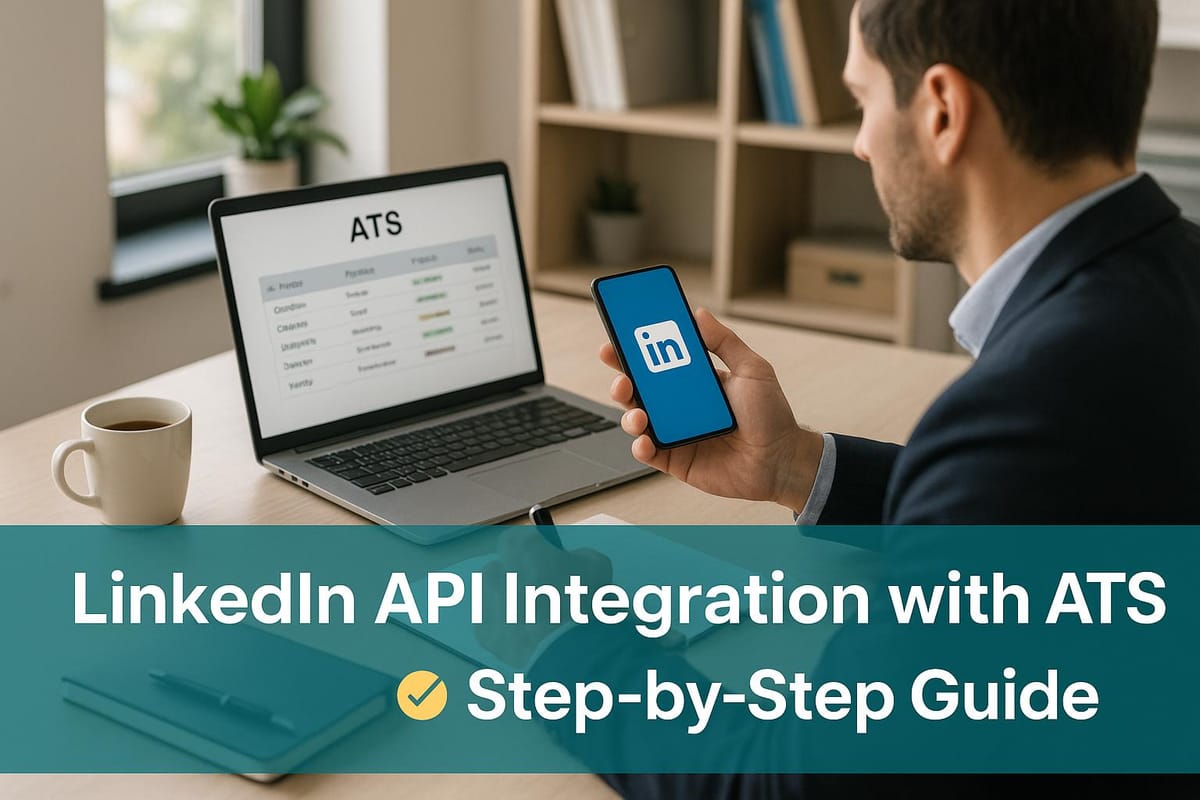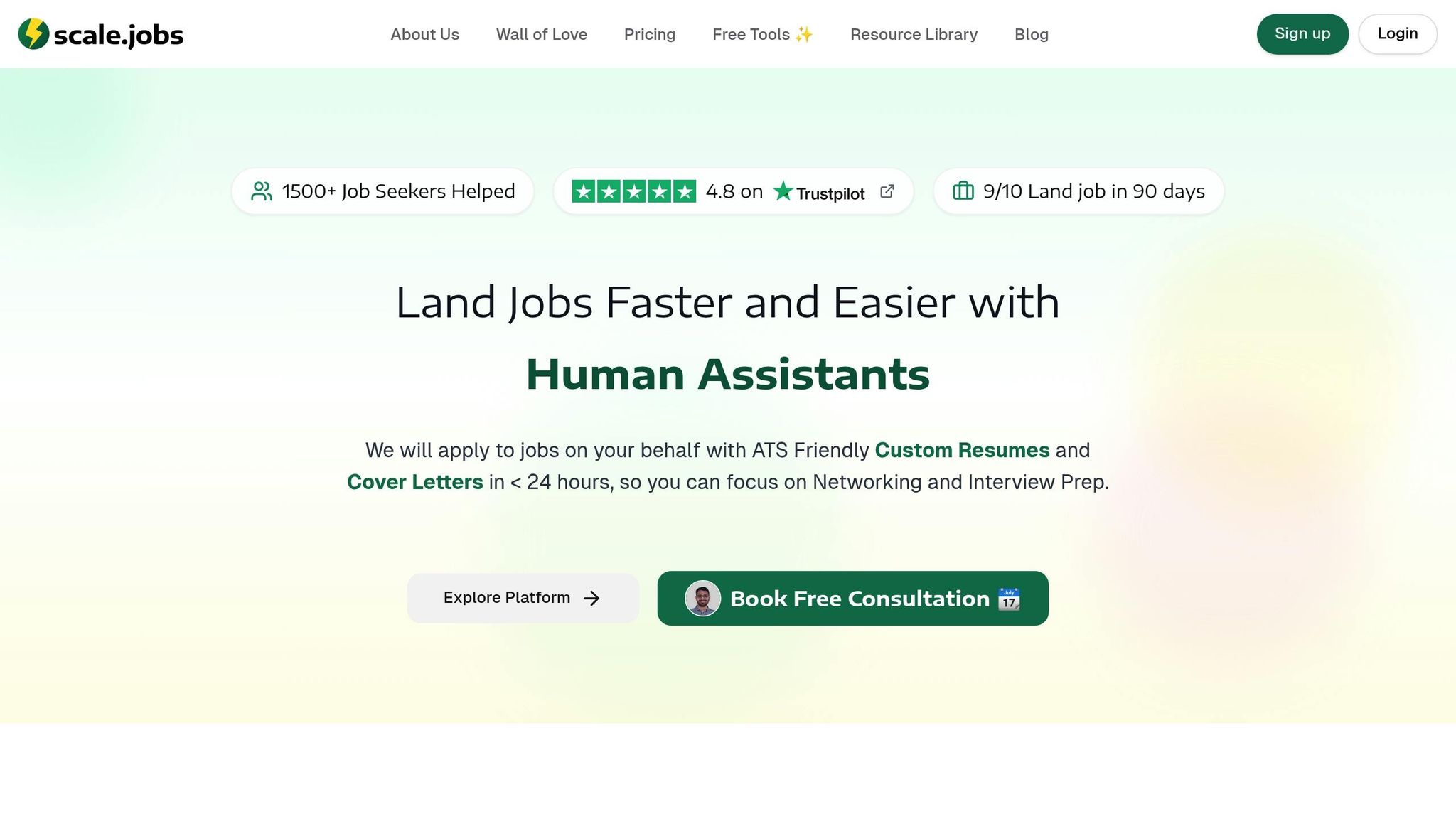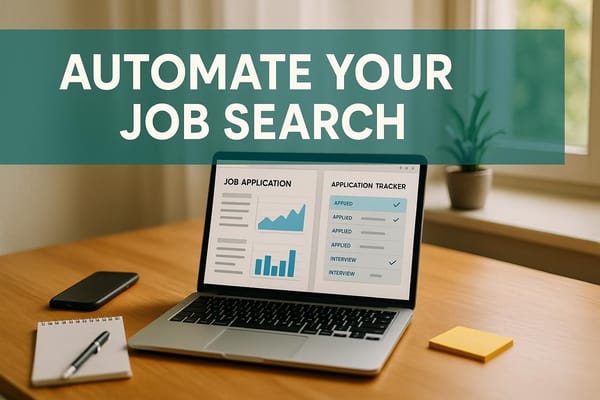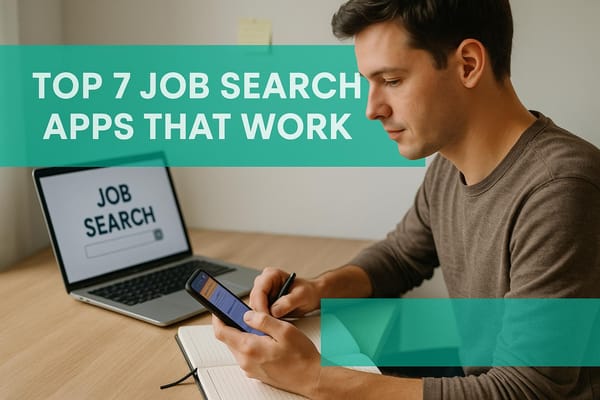LinkedIn API Integration with ATS: Step-by-Step Guide
Learn how to seamlessly integrate LinkedIn APIs with your ATS to enhance recruitment efficiency and streamline candidate sourcing.

Integrating LinkedIn APIs with an ATS streamlines hiring by automating job postings, syncing candidate data, and enabling recruiters to access LinkedIn's vast professional network directly within their ATS. This eliminates manual data transfers and improves efficiency. Here's what you need to know:
- Key APIs: Job Posting API, Apply Connect, and Recruiter System Connect allow job postings, real-time application tracking, and unified candidate searches.
- Benefits: Direct LinkedIn access in the ATS, real-time data sync, and enhanced candidate sourcing with LinkedIn's recommendations.
- Requirements: LinkedIn Talent Solutions Partner status, OAuth 2.0 setup, and strict compliance with LinkedIn's data security protocols.
- Setup Steps: Register a LinkedIn Developer app, configure OAuth, secure API credentials, and test integration using LinkedIn's endpoints.
- Challenges: Limited API access since 2015, strict approval processes, and potential issues like authentication failures, rate limits, and browser compatibility.
Starting October 1, 2025, LinkedIn will stop accepting new partners for Apply with LinkedIn (AWLI), making it harder for new companies to integrate. If you're considering LinkedIn API integration, act quickly to meet the requirements and streamline your recruitment process.
LinkedIn Recruiter + Your ATS = Better Together | Recruiter System Connect
Prerequisites for LinkedIn API Integration
Before diving into LinkedIn API integration, it's crucial to meet specific business and technical requirements. Since 2015, LinkedIn has restricted public API access, making the approval process both selective and time-intensive.
LinkedIn Talent Solutions Partner Status
The biggest challenge is obtaining LinkedIn Talent Solutions Partner status. This approval process is rigorous, typically taking 3–6 months, with an approval rate of less than 10%.
"LinkedIn no longer provides public access to its APIs. Since 2015, all LinkedIn API access requires joining the LinkedIn Partner Program." - Unipile
To be considered, you’ll need to demonstrate a strong user base and show how your platform benefits LinkedIn users. LinkedIn evaluates whether your ATS platform can manage data responsibly while adding genuine value for recruiters and candidates.
The review process is thorough, covering technical infrastructure, business model compatibility, and data security protocols. LinkedIn ensures that all partners meet its strict standards for privacy and compliance.
Important Update: Starting October 1, 2025, LinkedIn will no longer accept new partners for Apply with LinkedIn (AWLI). Existing partners will still be supported, but this change raises the bar for approval on other integration types.
If you’re not already a LinkedIn Talent Solutions Partner, you’ll need to complete the LinkedIn Talent Solutions Partner Request Form through your LinkedIn Business Development contact. Be prepared to outline how your integration will enhance LinkedIn's ecosystem instead of merely extracting data.
Once partner status is secured, you can move forward by configuring your developer application for secure integration.
Setting Up a LinkedIn Developer Application
The next step is creating your LinkedIn Developer application. This will generate the Client ID and Client Secret keys needed for OAuth 2.0 authentication.
Start by logging into the LinkedIn Developer website using your LinkedIn credentials. Navigate to "My Apps" and click "Create App" to begin the setup. Use a naming convention like <CompanyName-Dev> for development applications and <CompanyName> for production applications. The logo you upload will appear on the consent screen during OAuth flows, so make sure it’s professional and recognizable.
For ATS providers, the process involves additional complexity. You’ll need to create separate developer applications for each customer using the Provisioning API. Each customer will have unique API keys (Client ID and Secret), and their company names will appear on OAuth consent screens.
Set your OAuth 2.0 Redirect URLs carefully, as these determine where users are redirected after authentication. Any errors here can disrupt the integration.
Store your Client ID and Client Secret securely, as these credentials authenticate all API requests. Always use HTTPS for communications involving token exchanges or sensitive data.
Finally, review LinkedIn's API documentation to ensure your integration complies with their stringent usage terms.
Understanding LinkedIn API Documentation and Terms
LinkedIn's APIs are based on the Rest.li framework, so understanding the technical documentation and usage terms is essential. Compliance is non-negotiable.
Follow LinkedIn’s data privacy rules, such as fetching profiles only by LinkedIn ID and accessing basic information. Keep in mind that LinkedIn enforces a rate limit of 500 API calls per user per day, which could impact high-volume ATS operations.
"The use of these APIs is restricted to those developers approved by LinkedIn. Please reach out to your LinkedIn Relationship Manager or Business Development contact as you will need to meet certain criteria and sign an API agreement with data restrictions in order to use this integration." - LinkedIn | Microsoft Learn
For Recruiter System Connect (RSC) integration, additional requirements include having administrative access to LinkedIn Recruiter and your ATS platform, along with a Hiring Project Creator license for admin permissions in LinkedIn Recruiter.
Technical considerations include browser settings. Disable third-party cookie blocking and cross-site tracking in browsers like Microsoft Edge, Firefox, or Chrome during setup to avoid cookie conflicts that could interfere with the integration.
LinkedIn suggests starting with Job Posting APIs before moving on to Recruiter System Connect. This approach helps you understand their system architecture and data handling processes before tackling more advanced integrations.
All API requests must use OAuth 2-Legged Authorization. As a partner, you’ll invoke APIs on behalf of customers using their application’s OAuth Client ID and Client Secret, ensuring proper data isolation for each customer.
Keep a close eye on API usage to avoid exceeding rate limits. LinkedIn monitors usage patterns and may suspend access if terms of service are violated.
Meeting these prerequisites sets the stage for the detailed integration steps that follow.
Step-by-Step Integration Guide
To successfully connect LinkedIn's APIs with your ATS platform, follow these three essential phases. Each step is crucial and should be completed in sequence to ensure a smooth integration process.
Application Setup and OAuth Configuration
The first step in integrating LinkedIn's APIs is setting up your application and configuring OAuth 2.0. This creates a secure authentication framework for all API communications.
Start by registering a LinkedIn Developer application for each ATS customer using the Provisioning API. This ensures customer data remains isolated and displays their names on OAuth consent screens. Each customer will have unique API credentials, including a Client ID and Client Secret, for authentication.
Next, configure your OAuth 2.0 Redirect URLs. These URLs dictate where users are sent after authentication. Misconfigurations can disrupt the entire authorization flow, so make sure URLs are complete, start with "https://", and avoid trailing slashes. For example, use https://yourdomain.com/oauth/callback instead of https://yourdomain.com/oauth/callback/.
Update the validJsSdkDomains settings to include all domains where LinkedIn widgets will be used. This step prevents cross-domain security issues that could block the authentication flow. Additionally, ensure your Content Security Policy includes "platform.linkedin.com" and "www.linkedin.com" to allow LinkedIn's widgets to load properly. Without these entries, users might face blank screens or failed authentication attempts.
Store API credentials securely in environment variables - never hardcode them into your codebase. For application-level API access, implement the OAuth 2.0 Client Credentials flow. This two-legged authentication method uses customer-specific credentials to generate bearer tokens for API requests. Since these tokens typically expire after 30 minutes, build an automatic refresh mechanism into your integration.
API Endpoints and Permissions
Once your application setup is complete, the next step is selecting the right API endpoints and permissions. LinkedIn's ATS integration relies on specific endpoints to deliver various functionalities.
The atsIntegrations API is the main configuration endpoint. Use the following endpoint to enable integrations for each customer:
POST https://api.linkedin.com/v2/atsIntegrations.
Common integration types include:
- APPLY_WITH_LINKEDIN: Streamlines job applications and candidate data synchronization.
- RECRUITER_SYSTEM_CONNECT_COMPANY: Links ATS systems with LinkedIn Recruiter.
- APPLY_CONNECT: Supports job posting and application tracking.
When enabling integrations, include the correct parameters in your API calls. For instance, set dataProvider=ATS to identify your platform type, and include the customer's company identifier in the integrationContext. Specify the tenantType based on the customer's LinkedIn Recruiter setup.
The Recruiter System Connect (RSC) feature offers advanced integration capabilities, such as syncing candidate information, InMail history, and notes between your ATS and LinkedIn Recruiter. It also supports One-Click Export and displays in-ATS indicators within LinkedIn Recruiter.
For job postings, configure the Job Posting APIs to create, update, publish, and close job ads on LinkedIn directly from your ATS. These endpoints require write permissions and must include essential job details like title, description, location, and company information.
To access user profile data, use the Profile API, which provides details such as names, headlines, locations, and work experience. This endpoint requires explicit user consent through a three-legged OAuth flow and appropriate scopes like r_liteprofile.
Request only the permissions necessary for your integration. LinkedIn actively monitors permission usage and may revoke access if excessive or unused permissions are requested. Common scopes include:
r_liteprofile: For basic profile information.r_emailaddress: For email access.w_member_social: For messaging capabilities.
| Integration Type | Primary API Endpoint | Required Permissions | Key Functionality |
|---|---|---|---|
| Apply with LinkedIn | POST /v2/atsIntegrations | OAuth 2.0 Client Credentials | Job application collection, candidate sync |
| Recruiter System Connect | RSC APIs + POST /v2/atsIntegrations | Partner status, ACL permissions | Candidate sync, InMail history, One-Click Export |
| Job Posting | Job Posting API | Write permissions for job content | Create, publish, update, and close job postings |
| Profile Access | Profile API | r_liteprofile, user consent | Access to name, headline, location, and experience data |
After configuring endpoints and permissions, test the integration thoroughly.
Testing and Validation
Testing is a critical phase of the integration process. Since LinkedIn doesn't offer a traditional sandbox environment, you’ll need to create mock services and implement robust validation procedures.
Start by building mock services that replicate LinkedIn's API responses. This allows you to test your integration logic without consuming API rate limits or impacting live data. Configure these mocks to handle both successful responses and error scenarios.
Use the Verify Customer Integrations API to monitor the integration's status during testing. Make calls to:
GET https://api.linkedin.com/v2/atsIntegrations
Include the appropriate parameters to check if integrations are enabled. The API will return status values like "Requested", "Partner Ready", or "Enabled."
Validate API requests and responses programmatically with tools like REST Assured, Assertible, or PyTest. Ensure requests include correct headers, authentication tokens, and required parameters. Confirm responses have the expected structure, proper status codes, and valid JSON formatting.
"Testing and validating API integrations before and after deployment is crucial. Pre-deployment, I conduct unit tests to validate individual API components and perform integration tests to ensure seamless communication between services. I also use mocking tools to simulate external dependencies." - Agha Furrukh Zahid, Integration Architect
Test OAuth 2.0 authentication flows, handling of expired tokens, and scenarios involving incorrect credentials. Evaluate performance under API rate limits and implement retry logic to handle throttling.
During testing, monitor metrics like response times, error rates, and overall API availability. Use synthetic monitoring to simulate real user interactions and catch potential issues that isolated tests might miss.
Integrate automated test suites into your continuous integration process. These should include:
- Unit tests: For individual API components.
- Integration tests: For end-to-end workflows.
- Regression tests: To identify issues caused by code updates.
Tools like Jenkins or GitHub Actions can automate these tests whenever your code is updated.
Finally, ensure that all server-side operations, such as the "Enable Customer Integrations" API call, originate from your backend servers. LinkedIn's APIs do not support client-side JavaScript for security-critical operations. Test this by attempting client-side calls and verifying they are correctly rejected.
Document all test cases and their expected outcomes. This documentation will be invaluable for troubleshooting and onboarding new team members who need to understand the integration's behavior.
Troubleshooting and Best Practices
LinkedIn API integrations can sometimes hit a few snags that demand immediate attention. Knowing the common problems and how to resolve them is essential to keep your ATS integration running smoothly and efficiently.
Common Integration Issues and Solutions
Authentication failures are the most frequent LinkedIn API issues. If you encounter a 401 Unauthorized error, double-check that your authentication header follows this format:
Authorization: Bearer (your access token)
This error typically points to an expired, revoked, or malformed token. If the token has expired, refresh it using your stored refresh token. For revoked tokens, users will need to re-authenticate.
Browser compatibility problems can also disrupt widget functionality. For example, Safari doesn't support features like Recruiter System Connect, Apply Connect, or Premium Job Posting. Encourage users to switch to supported browsers such as Chrome, Edge, or Firefox. Additionally, advise them to disable third-party cookie blocking for www.linkedin.com.
Permission-related errors, often seen as 403 Access Denied, occur when your application lacks the necessary permissions for specific API calls. Ensure your app is configured with the correct scopes and that users have granted these permissions during the OAuth flow. If you update scopes after the initial authentication, users must re-authenticate to grant the new permissions.
Rate limiting violations result in 429 Rate Limit errors when your app exceeds LinkedIn's request thresholds. Use the LinkedIn Developer Portal to analyze your usage patterns. Common culprits include polling APIs too frequently, making duplicate requests, or skipping caching mechanisms. If your legitimate usage exceeds the limits, contact LinkedIn's partner program to discuss increasing your quota.
Server-side errors like 500 Internal Server Error or 504 Gateway Timeout signal issues on LinkedIn's end. For temporary outages, implement exponential backoff retry logic. If the problem persists, document the request details and report the issue.
Data synchronization issues often arise from validation errors or formatting mismatches. Always validate inputs, especially date formats and character encoding, to ensure they meet API specifications.
| Error Type | Common Causes | Resolution Steps |
|---|---|---|
| 401 Unauthorized | Expired/invalid access token | Refresh token or re-authenticate user |
| 403 Access Denied | Missing permissions or scopes | Verify application permissions and user consent |
| 429 Rate Limit | Excessive API requests | Review usage patterns and implement caching |
| 500/504 Server Errors | LinkedIn infrastructure issues | Implement retry logic and report persistent issues |
These solutions tie directly into security and monitoring practices that ensure long-term stability.
API Security and Compliance Best Practices
Beyond fixing issues, strong security practices are essential to protect your integration. Safeguard API credentials and user data by storing keys, client secrets, and tokens in secure environments like AWS Secrets Manager or Azure Key Vault. Never hardcode credentials in your source code or configuration files that could be exposed through version control.
Rotate tokens periodically to reduce security risks, and monitor for unusual authentication patterns that might signal unauthorized access attempts.
LinkedIn enforces strict policies for handling user and candidate data. Implement data retention policies to automatically purge unnecessary personal information after a set period. Always use HTTPS for data transmission and encrypt stored data with industry-standard algorithms like AES-256.
Managing user consent is critical when accessing profile data or communication preferences. Maintain detailed logs of user permissions and consent timestamps. Provide users with clear options to revoke permissions and ensure your system stops accessing their data immediately when consent is withdrawn. Regular audits can help identify and eliminate unnecessary data access.
"But without good logging, you're flying blind, observability is underrated." - Raul Junco, Simplifying System Design
Comprehensive audit logging is a must. Record all API interactions, including request timestamps, user identifiers, accessed endpoints, and response codes. These logs are essential for security monitoring and compliance reporting. Set log retention periods that align with your operational and regulatory needs.
Conduct regular security assessments, including penetration tests, reviews of access controls, and validation of encryption practices. Stay updated with LinkedIn's latest API versions and security recommendations to ensure your integration remains secure.
Monitoring and Optimizing API Usage
Once you've resolved errors and strengthened security, continuous monitoring ensures your integration stays healthy. Track multiple performance dimensions to catch potential issues before they affect users. For instance, monitor response times - not just averages but also outliers, which can signal network problems or API throttling. Set alerts for unusually high response times.
Error rate tracking is another key metric. Monitor both HTTP error codes and application-level errors. Break down error patterns by endpoint to quickly identify problem areas.
Keep an eye on resource usage like CPU, memory, and bandwidth. Enable auto-scaling to handle traffic spikes without disruptions.
"Proactive monitoring helps you address performance bottlenecks and maintain a seamless user experience." - API7.ai
Usage pattern analysis can uncover opportunities to improve efficiency. For example, monitor which API endpoints are hit most often, identify peak usage times, and analyze user behavior. Use this data to implement caching strategies and optimize resource allocation.
LinkedIn's Developer Portal provides detailed analytics, including request volumes, error rates, and quota usage. Regularly review these metrics to ensure your integration stays within limits and to identify trends that may require changes to your architecture.
Distributed tracing tools like Datadog or New Relic can help you understand how LinkedIn API requests interact with your system components, such as databases and caching layers. This visibility is crucial for identifying bottlenecks and optimizing request handling.
Set up automated alerts for critical metrics like API availability, response time degradation, error rate spikes, and quota limits. Focus on reducing redundant API calls by using intelligent caching and batching requests. For example, cache responses for frequently accessed data for up to 24 hours, while using shorter cache durations (5–15 minutes) for dynamic data.
Regular performance reviews should analyze API usage trends, identify seasonal patterns, and guide capacity planning. Document performance baselines and track improvements to measure ROI and plan future optimizations effectively.
ATS Platform Comparison for LinkedIn Integration
When choosing an ATS with LinkedIn integration, it’s essential to understand the features that can truly elevate your recruitment process. Below, we break down the key differences between popular platforms and explore how scale.jobs sets a new benchmark.
ATS Platform Feature Comparison
Different ATS platforms offer varying levels of LinkedIn integration. Among enterprise-level solutions, Greenhouse and Workday stand out with their LinkedIn Recruiter System Connect (RSC) integrations, allowing data to flow seamlessly between their systems and LinkedIn Recruiter.
Greenhouse takes it a step further with Apply Connect, enabling candidates to apply directly through LinkedIn while syncing applications in real time with the ATS. Workday, on the other hand, doesn’t include this feature. Both platforms also fall short when it comes to advanced RSC functionalities like Unified Search, Recommended Matches, and Enhanced 1-Click Export.
LinkedIn Talent Hub is a unique player in the space, being the only ATS built directly on LinkedIn’s network.
"LinkedIn Talent Hub is the only ATS built on LinkedIn's network and it seamlessly integrates with all your most-used recruiting tools." - Sarah-Beth Anders
This tight integration removes many of the API challenges faced by other platforms.
For mid-market solutions, Bullhorn ATS and iCIMS Talent Cloud deliver solid LinkedIn integration using REST and SOAP APIs. Bullhorn’s API-first design allows for extensive customization, while iCIMS partners directly with LinkedIn to simplify sourcing workflows. However, both options often require extra technical setup and ongoing maintenance, which can be a hurdle for some teams.
Platforms like Jobscan and TealHQ cater more to job seekers than employers. They focus on LinkedIn profile optimization and job tracking but lack comprehensive tools for managing recruitment workflows.
When it comes to costs, there’s a wide range. A LinkedIn Recruiter seat typically costs between $800 and $900 per month, while some competitors charge as little as $107 monthly. Most LinkedIn integrations are included with Recruiter licenses, though additional features like Job Wrapping may come with extra fees. These cost and feature differences highlight why scale.jobs offers a compelling alternative.
Why scale.jobs Outperforms Competitors

Unlike traditional ATS platforms, scale.jobs reimagines candidate management by addressing what enterprise solutions often overlook: the job seeker experience. While platforms like Greenhouse and Workday focus heavily on employer workflows, scale.jobs prioritizes a seamless, human-driven approach.
No API limitations. Traditional ATS platforms depend on APIs, which can break or require costly updates when LinkedIn changes its system. scale.jobs avoids this entirely by using trained virtual assistants who manually process applications, ensuring compatibility across all portals without relying on technical integrations.
Transparent pricing. Instead of paying $800–$900 monthly for LinkedIn Recruiter seats plus ATS licensing fees, scale.jobs offers flat-rate campaign bundles starting at $199 for 250 applications. This straightforward pricing model eliminates recurring costs, which can exceed $10,000 annually for mid-sized teams.
Real-time updates and proof of work. Many ATS systems provide limited visibility into application progress. In contrast, scale.jobs offers live updates via WhatsApp and timestamped screenshots, ensuring complete transparency throughout the process.
Tailored resume customization. Most enterprise ATS platforms rely on templates, but scale.jobs crafts unique resumes and cover letters for each job posting. This personalized approach significantly increases the chances of success.
scale.jobs vs Competitors: Integration Depth
Traditional ATS systems often struggle with integration limits, requiring separate setups for different job boards and career sites. scale.jobs overcomes this with a blend of automation and human insight. Its trained assistants can handle applications across corporate ATS systems, niche job boards, and direct company portals without technical restrictions.
Speed matters. In competitive markets, response time can be a deciding factor.
"Research shows that 81% of job seekers say communication speed influences their decision to join a firm."
While traditional ATS platforms batch-process applications and rely on automated responses, scale.jobs completes applications within 24 hours, paired with personalized communication.
Avoiding bot detection. Many companies now use bot detection to filter out automated applications. scale.jobs sidesteps this issue entirely by employing a manual process, ensuring applications are flagged as authentic.
Unlike tools like Jobscan, which focus on resume optimization, or TealHQ, which emphasizes career tracking, scale.jobs combines job search tools, AI assistance, and human support into one cohesive workflow. While automation can reduce hiring time by up to 75%, it often sacrifices the personal touch. scale.jobs bridges this gap, blending efficiency with a human-centered approach to deliver better outcomes for both employers and job seekers.
Conclusion and Key Takeaways
Integration Steps Summary
To get started with LinkedIn integration, you'll need to set up your LinkedIn Developer Application, configure OAuth 2.0, and secure your API credentials before requesting access. Each phase of the integration process involves enabling customer integrations through LinkedIn's Middleware Platform APIs while ensuring your ATS can securely manage and store API tokens. Once your integration is live, use LinkedIn's "Verify Customer Integrations" API endpoint to confirm that your onboarding status has moved from "Requested" to "Enabled."
It's crucial to follow LinkedIn's data privacy and security policies throughout the process. Regularly monitor API usage, rotate credentials, and stay updated with LinkedIn's latest guidelines.
LinkedIn Talent Solutions data from 2024 highlights the benefits of ATS integrations. Companies using LinkedIn Recruiter System Connect report up to 30% faster candidate review times and a 25% reduction in duplicate candidate records, leading to more efficient hiring processes and an improved candidate experience.
These technical steps form the foundation for selecting an ATS platform that fully leverages LinkedIn integration benefits.
Choosing the Right ATS Platform
The success of your LinkedIn integration heavily depends on choosing the right ATS platform. While enterprise solutions like Greenhouse and Workday offer strong integration capabilities with LinkedIn Recruiter System Connect, they often come with steep costs and complex licensing requirements.
On the other hand, scale.jobs offers a fresh approach by combining automation with human expertise. This platform bypasses many of the traditional API limitations, ensuring reliable performance even when LinkedIn updates its systems. With a flat-fee pricing model starting at $199 for 250 applications, it eliminates recurring subscription fees and reduces administrative overhead.
For job seekers, scale.jobs stands out by offering AI-powered tools for resume and cover letter creation, paired with human support. This is particularly helpful for recent graduates, professionals navigating career changes, and immigrants managing visa-related challenges. Features like live updates via WhatsApp and proof-of-work screenshots provide a level of transparency that traditional ATS platforms often lack.
As recruitment continues to evolve, the focus is shifting toward more personalized and efficient processes. Whether you opt for a traditional ATS with LinkedIn integration or an all-in-one solution like scale.jobs, the key to success lies in blending technical capabilities with meaningful human insight to create better outcomes for both employers and job seekers.
FAQs
What challenges do businesses face when integrating LinkedIn APIs with their ATS, and how can they address them?
Integrating LinkedIn APIs with an ATS often comes with its fair share of hurdles, primarily due to compatibility issues. Variations in data formats and structures can create synchronization problems, leading to bugs or failed integrations. On top of that, mismatched API protocols or inadequate testing can result in technical hiccups that disrupt the process.
To tackle these obstacles, it's crucial to standardize data formats, headers, and structures in resumes and profiles. This consistency helps minimize errors during synchronization. Additionally, conducting thorough tests of API configurations and requests - while ensuring proper authorization - is essential. Identifying and fixing potential issues early on can make integration smoother and significantly cut down on errors. A thoughtful setup and testing approach can go a long way in ensuring a successful connection between the systems.
How will LinkedIn's restrictions on new Apply with LinkedIn partnerships starting October 2025 affect ATS integrations?
Starting in October 2025, LinkedIn will stop accepting new partnerships for its Apply with LinkedIn feature. This shift could make it harder for companies to integrate their applicant tracking systems (ATS) with LinkedIn, potentially disrupting job application processes and candidate sourcing. While existing integrations should continue to work, businesses looking to create new connections may encounter obstacles.
To navigate this change, companies might consider alternative solutions such as scale.jobs. This platform offers ATS-friendly resumes, personalized assistance, and clear job application tracking, helping recruiters stay efficient despite LinkedIn's updated policy.
What are the best practices to securely integrate LinkedIn's API with an ATS?
To connect LinkedIn's API with an applicant tracking system (ATS) securely, start by using OAuth 2.0 for authentication. This protocol ensures user data is well-protected during the integration process. Additionally, make sure all data is encrypted both during transmission and while stored to guard against unauthorized access.
It's also critical to validate all inputs to block injection attacks and other security threats. Implement rate limiting to prevent misuse of the API, conduct regular security audits, and strictly follow LinkedIn's API usage and compliance guidelines. These practices not only safeguard user information but also ensure your system aligns with LinkedIn's policies.




